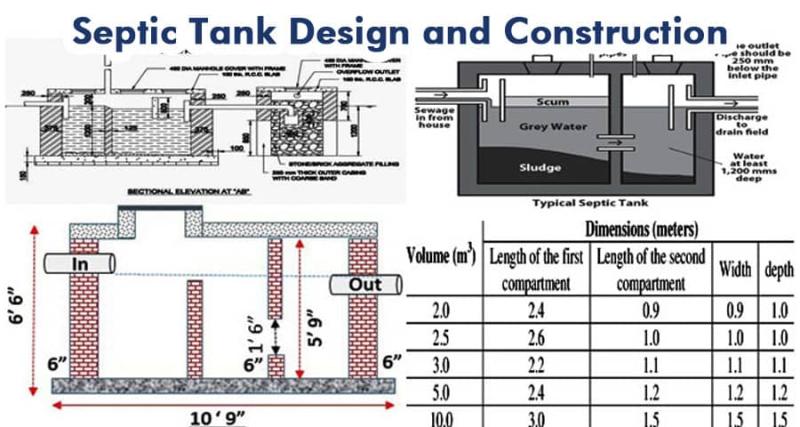Septic Tank Design and Construction | How to Calculate Septic Tank Size

Designing and constructing a septic tank is a critical process that ensures the efficient disposal of wastewater in areas without a centralized sewage system. A well-designed septic tank system is essential to prevent environmental contamination and public health hazards.
Understanding the Basics of Septic Tank Design
What is a Septic Tank?
A septic tank is an underground chamber made of concrete, fiberglass, or plastic through which domestic wastewater flows for basic treatment. Its primary function is to separate solids from liquids in the wastewater and initiate the breakdown of organic matter. The clarified liquid is then discharged into a drain field, where it undergoes further purification.
Components of a Septic Tank System
A typical septic tank system comprises the following components:
- Inlet Pipe: This pipe connects the household plumbing to the septic tank, allowing wastewater to enter the tank.
- Septic Tank: The main chamber where the separation of solids and liquids occurs. The tank is designed with compartments to enhance the efficiency of the separation process.
- Outlet Pipe: The outlet pipe leads the treated effluent from the tank to the drain field.
- Drain Field (Leach Field): A network of perforated pipes laid in gravel-filled trenches, which allows the effluent to percolate into the soil for further treatment.
- Vent Pipe: Ensures the release of gases produced by anaerobic bacteria within the tank.
Importance of Proper Septic Tank Design
The design of a septic tank is crucial for its functionality. An improperly designed tank can lead to frequent failures, environmental pollution, and health risks. Key factors to consider in septic tank design include the size of the tank, the material used, and the placement of the tank and drain field.
Post Your Ad Here
Comments